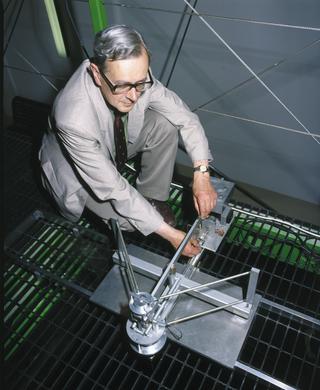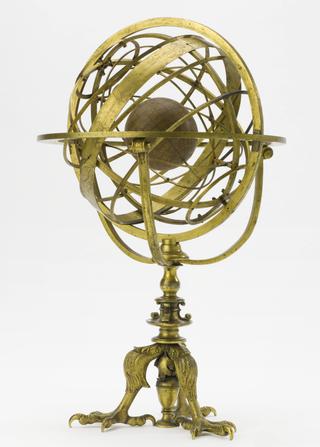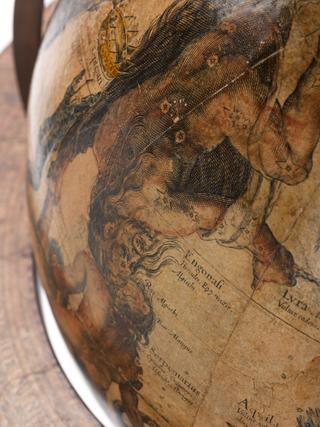
Working model of Day and Night Terrestrial Globe
- maker:
- Science Museum
Working model of Day and Night Terrestrial Globe. Constructed in Museum after a design of Mr.W.G. ten Houte de Lange, of the Hague Planetarium
The model shows the extent of day and night on the earth at different seasons of the year. The bright spot shows the place at which the sun is directly overhead.
One complete rotation of the globe corresponds to a period of 24 hours on the earth. Only one day, the 21st, of each month is illustrated; the machine then automatically turns to show a day in the following month.
On the 21st of March and the 21st of September the day and night are of equal length all over the world. These are the two equinoxes. On the 21st of June, the summer solstice, the sun reaches its furthest distance north in the Tropic of Cancer, and places in the northern hemisphere have their longest day. Within the Arctic Circle the sun then does not set and the day is 24 hours long. On the other hand within the Antarctic Circle, near the South Pole, there is a continuous night.
At the winter solstice, on the 21st of December, the sun reaches its most southerly declination in the Tropic of Capricorn and the conditions of the 21st of June are reversed.
Details
- Category:
- Astronomy
- Object Number:
- 1939-382
- type:
- terrestrial globe
- credit:
- Science Museum (Great Britain)




